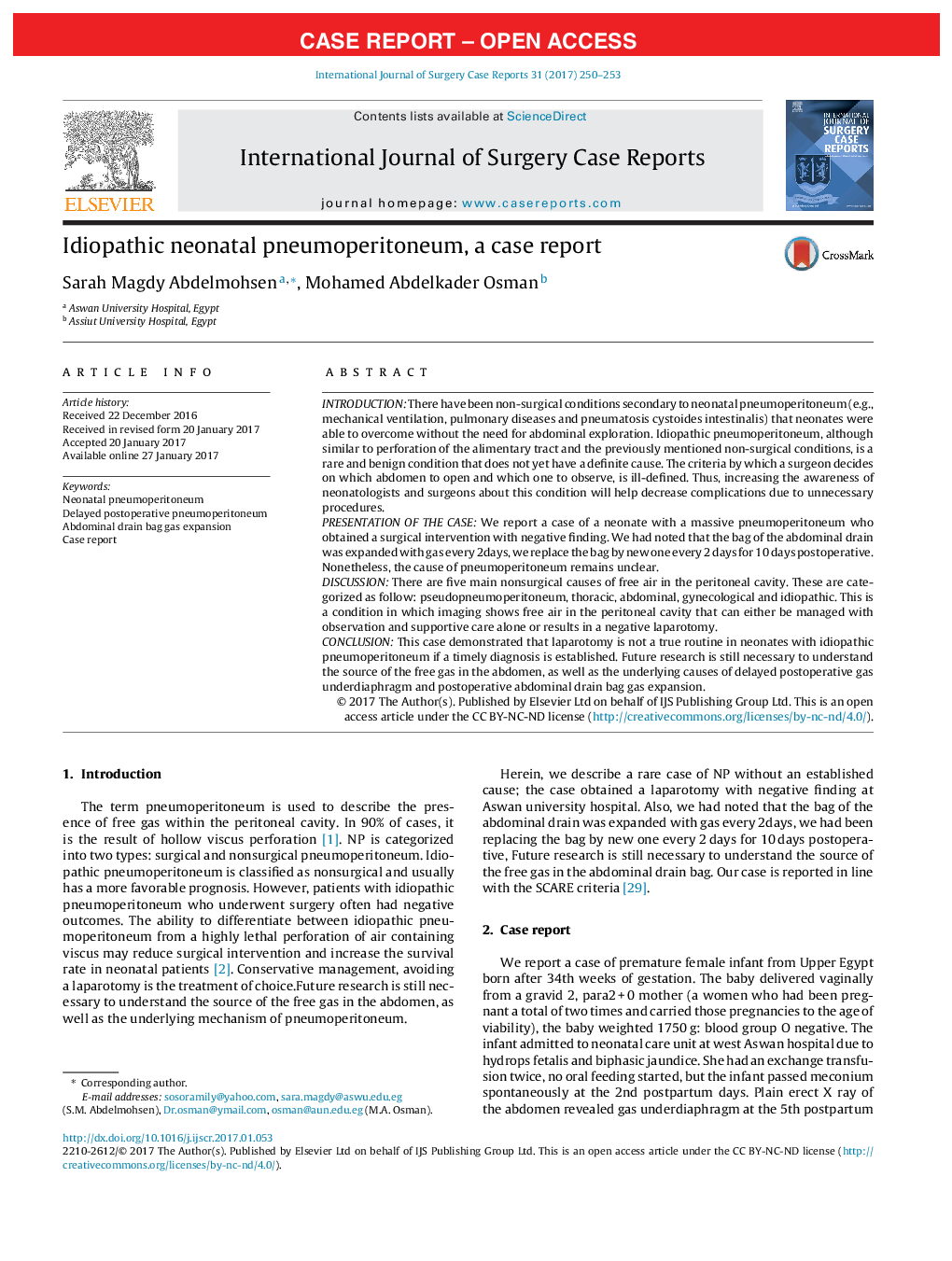| Article ID | Journal | Published Year | Pages | File Type |
|---|---|---|---|---|
| 5732959 | International Journal of Surgery Case Reports | 2017 | 4 Pages |
â¢There have been non-surgical conditions secondary to neonatal pneumoperitoneum.â¢Laparotomy is not a true routine in neonates with idiopathic pneumoperitoneum if a timely diagnosis is established.â¢Increasing the awareness of neonatologists and surgeons about this condition will help decrease complications due to unnecessary laparotomy.
IntroductionThere have been non-surgical conditions secondary to neonatal pneumoperitoneum (e.g., mechanical ventilation, pulmonary diseases and pneumatosis cystoides intestinalis) that neonates were able to overcome without the need for abdominal exploration. Idiopathic pneumoperitoneum, although similar to perforation of the alimentary tract and the previously mentioned non-surgical conditions, is a rare and benign condition that does not yet have a definite cause. The criteria by which a surgeon decides on which abdomen to open and which one to observe, is ill-defined. Thus, increasing the awareness of neonatologists and surgeons about this condition will help decrease complications due to unnecessary procedures.Presentation of the caseWe report a case of a neonate with a massive pneumoperitoneum who obtained a surgical intervention with negative finding. We had noted that the bag of the abdominal drain was expanded with gas every 2days, we replace the bag by new one every 2Â days for 10Â days postoperative. Nonetheless, the cause of pneumoperitoneum remains unclear.DiscussionThere are five main nonsurgical causes of free air in the peritoneal cavity. These are categorized as follow: pseudopneumoperitoneum, thoracic, abdominal, gynecological and idiopathic. This is a condition in which imaging shows free air in the peritoneal cavity that can either be managed with observation and supportive care alone or results in a negative laparotomy.ConclusionThis case demonstrated that laparotomy is not a true routine in neonates with idiopathic pneumoperitoneum if a timely diagnosis is established. Future research is still necessary to understand the source of the free gas in the abdomen, as well as the underlying causes of delayed postoperative gas underdiaphragm and postoperative abdominal drain bag gas expansion.
